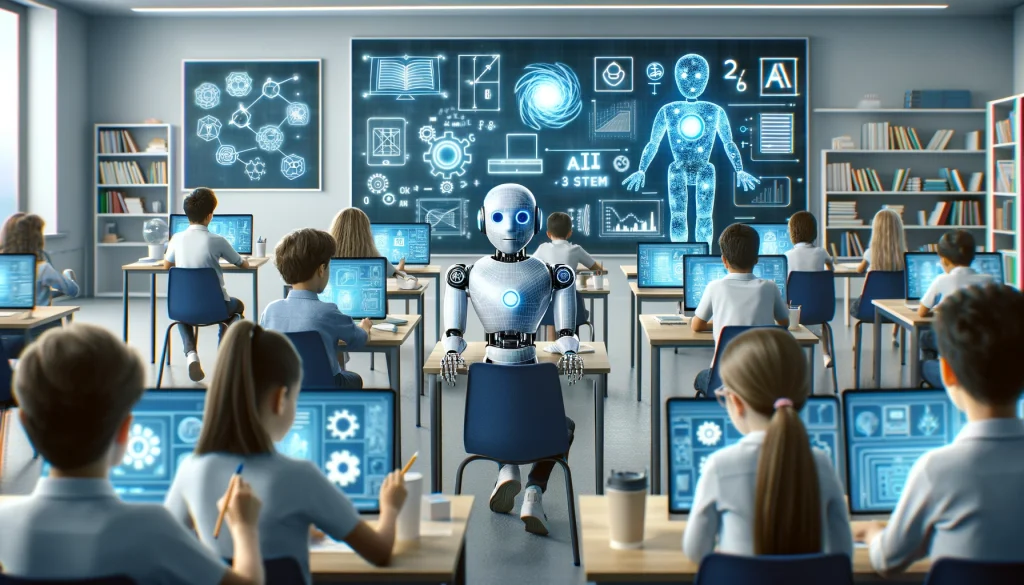Introduction
Artificial Intelligence (AI) is revolutionizing the education sector by introducing new ways to personalize learning and create smart classrooms. Traditional education models often follow a one-size-fits-all approach, which may not meet the diverse needs of every student. AI, with its ability to analyze data and adapt in real-time, offers powerful tools to tailor educational experiences, improve engagement, and boost learning outcomes.
How AI is transforming education through personalized learning and smart classrooms, the technologies involved, benefits, challenges, and future prospects.
What is Personalized Learning?
Personalized learning refers to educational methods that customize instruction to fit the individual abilities, preferences, and pace of each student. Instead of uniform teaching methods, AI-driven personalized learning adapts content, activities, and assessments to meet unique learning needs.
AI systems analyze data from students’ interactions — such as test results, participation, and behavior — to understand strengths, weaknesses, and learning styles. Based on this analysis, AI recommends tailored learning pathways and resources, ensuring students receive targeted support.
How AI Enables Personalized Learning
- Adaptive Learning Platforms
These platforms use machine learning algorithms to adjust the difficulty and type of content based on student performance. If a learner struggles with a concept, the system provides additional explanations, examples, or exercises until mastery is achieved. - Intelligent Tutoring Systems (ITS)
ITS simulate one-on-one tutoring by providing hints, feedback, and encouragement. These systems recognize when a student is stuck and offer personalized guidance, similar to a human tutor. - Learning Analytics
AI collects and analyzes extensive data from students’ activities, such as quizzes, assignments, and participation. Educators receive actionable insights into each student’s progress, enabling timely interventions. - Natural Language Processing (NLP)
NLP powers AI chatbots and virtual assistants that interact with students in real-time, answering questions, clarifying doubts, or providing explanations 24/7.
Smart Classrooms: The Integration of AI and Technology
A smart classroom is an enhanced learning environment equipped with AI-driven technologies that facilitate interactive, efficient, and engaging education.
Key features of smart classrooms include:
- AI-Powered Learning Management Systems (LMS): These systems organize curriculum delivery, track progress, and personalize learning paths.
- Speech and Facial Recognition: AI tools monitor student engagement by analyzing facial expressions and attention levels to alert teachers if students are distracted or confused.
- Automated Grading: AI speeds up assessment by automatically grading assignments and providing instant feedback.
- Virtual and Augmented Reality (VR/AR): Combined with AI, VR/AR creates immersive learning experiences that adapt in real-time to student responses.
Benefits of AI in Education
- Enhanced Engagement: Personalized content keeps students motivated by catering to their interests and abilities.
- Improved Learning Outcomes: Tailored instruction helps address knowledge gaps and reinforces strengths.
- Time Efficiency: Automating administrative tasks like grading frees educators to focus on teaching and mentoring.
- Accessibility: AI-powered tools support diverse learners, including those with disabilities or language barriers.
- Data-Driven Decisions: Educators can use insights from AI analytics to refine curricula and teaching strategies.
Challenges and Considerations
While AI in education offers numerous benefits, it also presents challenges:
- Data Privacy: Collecting student data raises concerns about consent, security, and misuse.
- Equity Issues: Not all schools have access to AI technology, potentially widening the digital divide.
- Dependence on Technology: Overreliance on AI may reduce human interaction, which is essential for social and emotional development.
- Bias in AI Models: AI systems trained on biased data can perpetuate inequalities or unfair assessments.
Addressing these challenges requires transparent policies, ethical AI design, and inclusive infrastructure development.
The Future of AI in Education
The evolution of AI promises even more sophisticated personalized learning and smarter classrooms. Emerging trends include:
- Emotionally Intelligent AI: Systems that understand and respond to students’ emotional states, creating supportive learning environments.
- Lifelong Learning Platforms: AI that supports continuous education beyond traditional classrooms, adapting to career changes and new skills.
- Collaborative AI Tools: Technologies that facilitate peer learning and group projects by matching complementary skills and learning styles.
As AI matures, its partnership with educators will redefine education, making it more inclusive, adaptive, and effective worldwide.
Conclusion
AI is ushering in a new era in education by enabling personalized learning and transforming classrooms into smart, responsive environments. While challenges exist, the potential to enhance student engagement, improve outcomes, and support educators is immense. Embracing AI thoughtfully will help build an education system that meets the needs of every learner in the 21st century.


